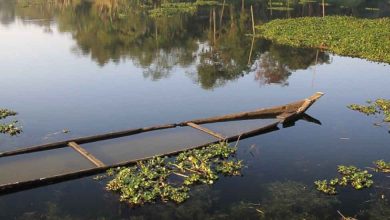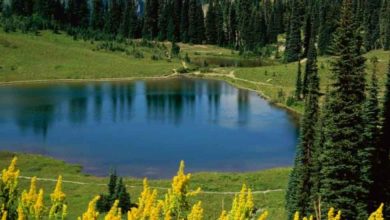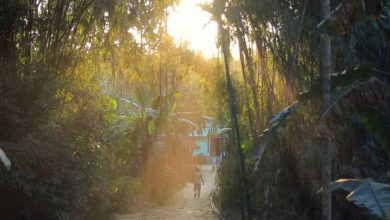Caves talk to us like no one else can! It is the construction of rock-cut caves that take us back to the bygone era. Kanheri caves in Mumbai are a group of caves depicting the life of Buddhists. As you walk through the fine sculptures and carvings, you take home something you had only thought of or seen in books! Kanheri Caves are famous across the city for their location as well as their marvellous existence.
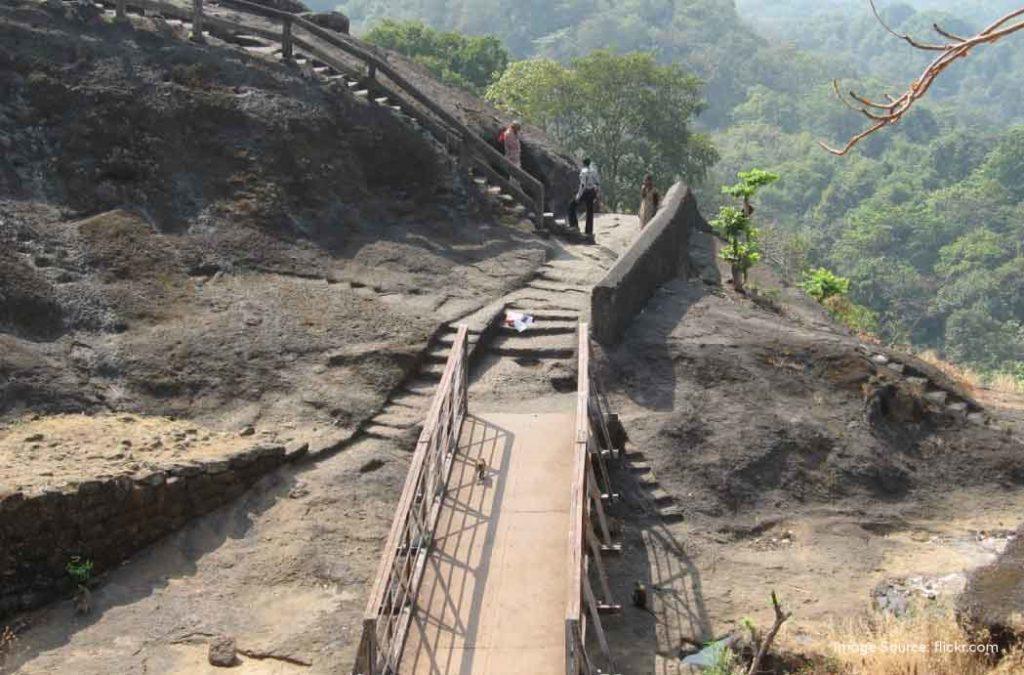
Imagine an entire historic period that lies in the heart of Mumbai. Isn’t it funny how you must have never thought of something so ancient existing in the bustling city? Now is the time to explore the lifestyle of the Buddhist community of the ancient era. As you walk through the impeccable construction, ensure to check out Treebo hotels to stay after a tiring day. Check out this blog for complete details for your visit.
Kanheri Caves: What to explore?
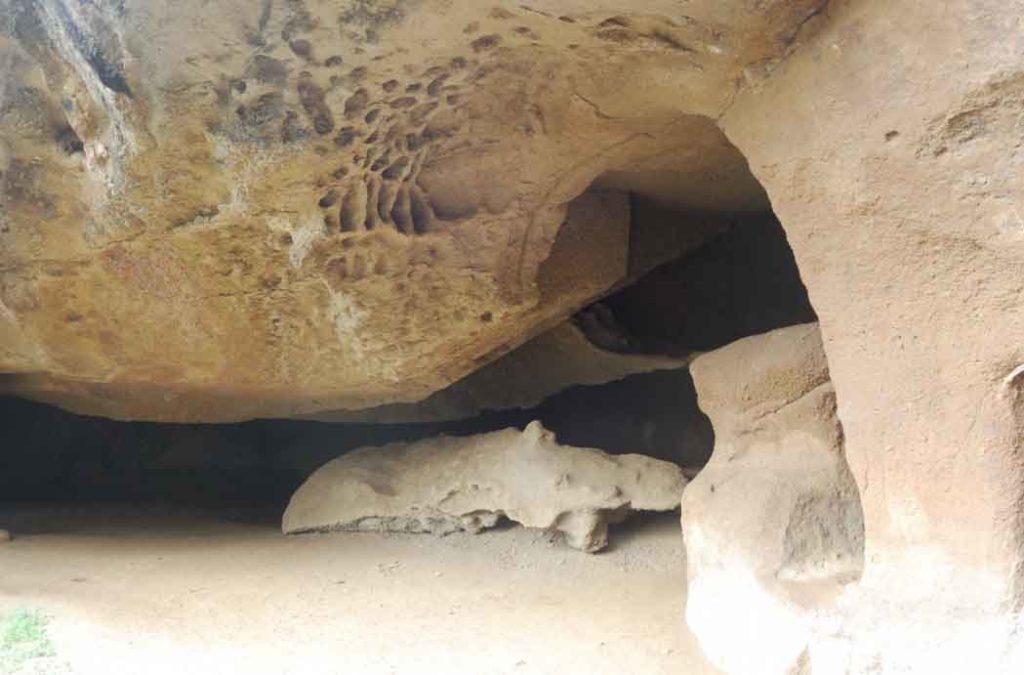
Kanheri is a place where these caves were excavated during the mid-3rd century B.C. Kanheri caves are located inside Sanjay Gandhi National Park (SGNP) in Borivali, Mumbai. According to the findings, these caves consist of more than 100 caves. Each cave is unique on its own due to its distinctive features. Moreover, the caves also depict architectural brilliance resulting in more and more tourists every year.
1. Chaitya Grihas
Since there are so many caves at Kanheri, it can be difficult to understand the structures. Cave 3 was initially designed as a Chaityagriha with sculptures and intricate carvings. What makes it different is the spacious rectangular hall and pillars.
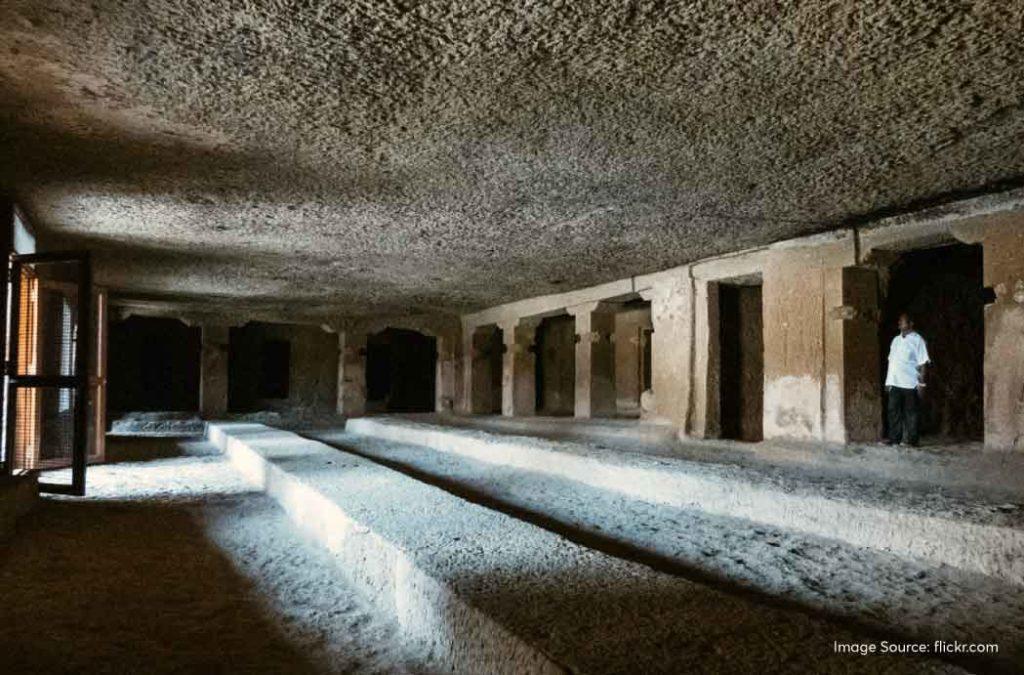
As you walk through the Chaityagriha, you can witness many pillars. While these pillars are not symmetrically aligned, they still showcase the age-old architectural styles. This cave also has a window which was probably built for light and ventilation. Do not forget to see the two sculptures of Buddha standing in Varada Mudra.
Cave 1 is also an incomplete Chaityagriha which has a pillared hall. As per archaeological findings, this cave was supposed to be a double-storey structure.
2. Darbar Hall
Kanheri caves transport you to the other caves in India as they have an uncanny resemblance. Cave 11 here is known as the Darbar Hall. Moreover, it is constructed similarly to the one you can see at Ellora Caves.
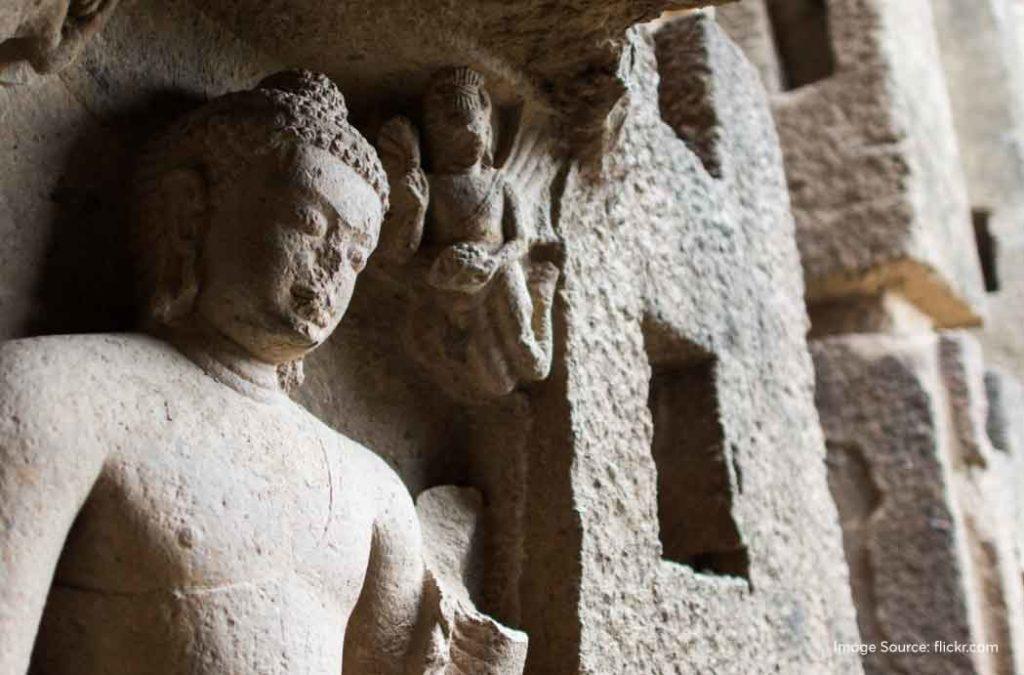
The Darbar Hall has a front verandah and low stone benches. Interestingly, this cave allows you to witness Buddha in Dharmacakra pravartana mudra. Apart from the sculptures, Darbar Hall in Kanheri caves also has a number of inscriptions.
Unearth the Forgotten Chapters of the Past with These 7 Caves in India
3. Sculpture Art
Kanheri caves are best known for their sculptures! Whether it is the face of a Buddha or any Bodhisattva image, sculpting them so well is an art. Tourists and locals are often attracted to witness the craftsmanship at these caves. Some caves have small structural stupas. You can check Cave 33 and Cave 38 for other sculptures.
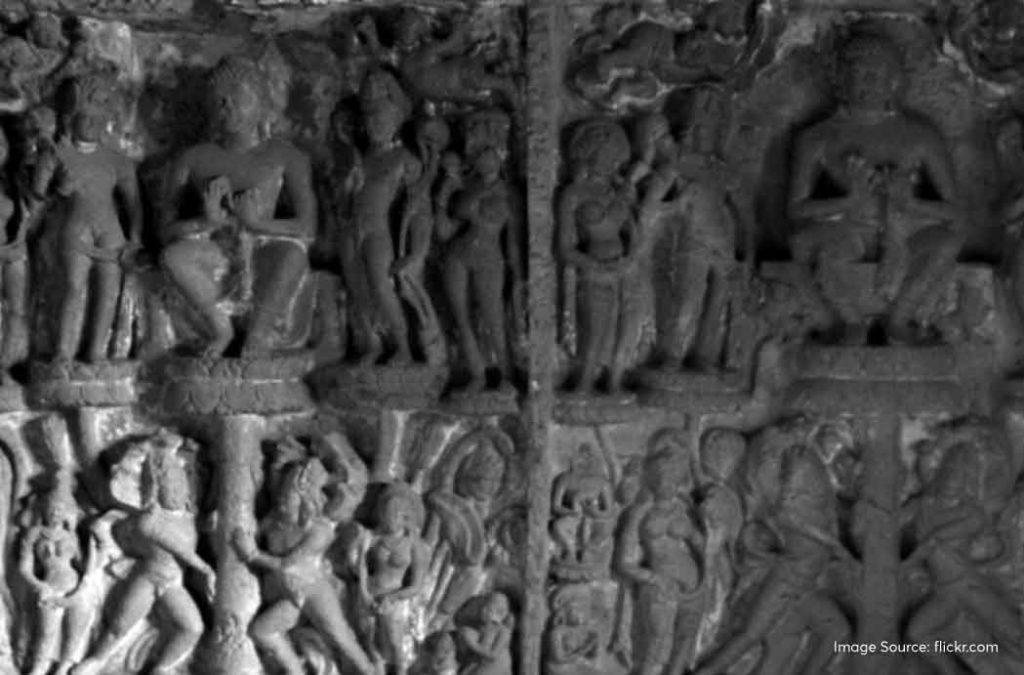
Kanheri caves have a plethora of images of Buddha in seated and standing positions. Caves 2, 31 and 41 are great for witnessing these sculptures. Avalokitesvara is the refusal of Buddhahood unless all beings are liberated. Being an important part of their culture, various sculptures depicting Avalokitesvara can be seen. Head to caves 41 and 90 to watch the sculptures performing different acts. These excellent sculptures talk a lot about Bodhisattva and their practices.
It not only takes you to that era but gives you a glimpse of what the past must have been like! Sculptures of elephants, lions, robbers and other acts speak volumes about the lifestyle back then. Isn’t it always interesting to see how today’s life relates somewhat to the bygone eras? That’s exactly what sculptures are for – they talk to you effortlessly.
4. Viharas and Monasteries
Kanheri caves are home to secrets of an unknown world. As you enter the main area of caves, know that some of these caves also have viharas. Viharas are prayer halls used for chanting and other religious activities. Many caves have spacious prayer halls where monks once offered their prayers.
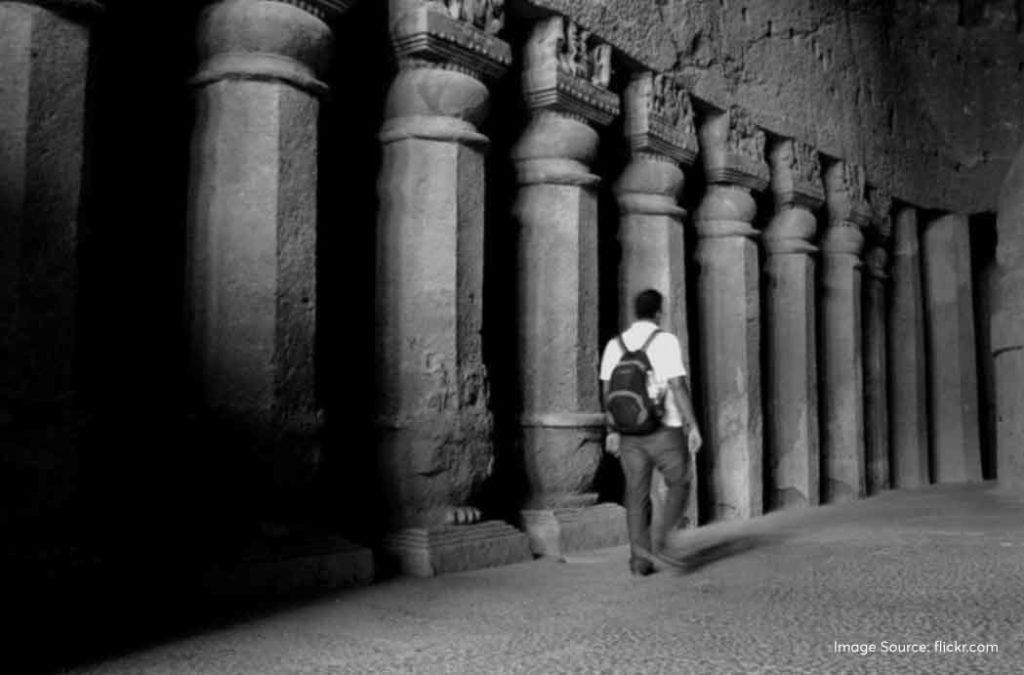
It is believed that these prayer halls were specifically built for Bhikshus. You can also witness the relics of Buddha and other images of Bodhisattva on the walls of the hall.
Additionally, certain areas of the caves were also built as monasteries dedicated to monks. Monks used these spaces for meditation and attaining knowledge. It might be true that some monks also attained enlightenment by meditation in these caves.
Caves of Meghalaya: Unveiling the Underground Marvels in the Abode of Clouds
4. Mesmerizing Views
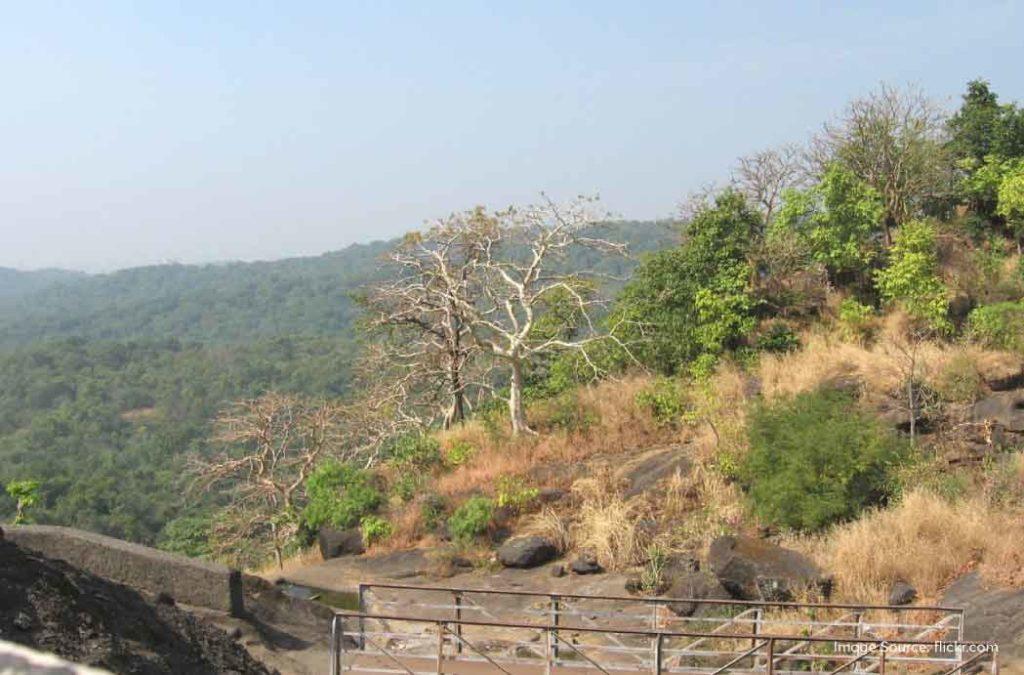
Apart from the caves of Kanheri and the architectural splendour, you are sure to fall in love with the views. As you reach towards the top, you can witness lush greenery around. The open sky with historical structures makes Kanheri Caves a delightful place! The caves elevated their glamour during the monsoon season due to the pleasant climate.
5. Water Management System
Isn’t it intriguing how an entire sect of people once inhabited this place? Kanheri caves are here to astonish you with everything you see. Monks back then constructed an excellent water management system to store the rainwater. A series of streams are connected to huge storage tanks. It ensures zero wastage of water during heavy rainfall. Notice a network of channels that connect directly to the tanks.
6. Inscriptions and a Cemetery
Kanheri caves are not new to ancient inscriptions. These inscriptions talk a lot about what might have happened in the past. These caves have several inscriptions in Devanagari, Brahmi and Pahlavi scripts. The inscriptions mostly mention the names of business owners who patronized the caves. You can also find a lot of paintings with different texts. Some of them have also been kept safe in museums.
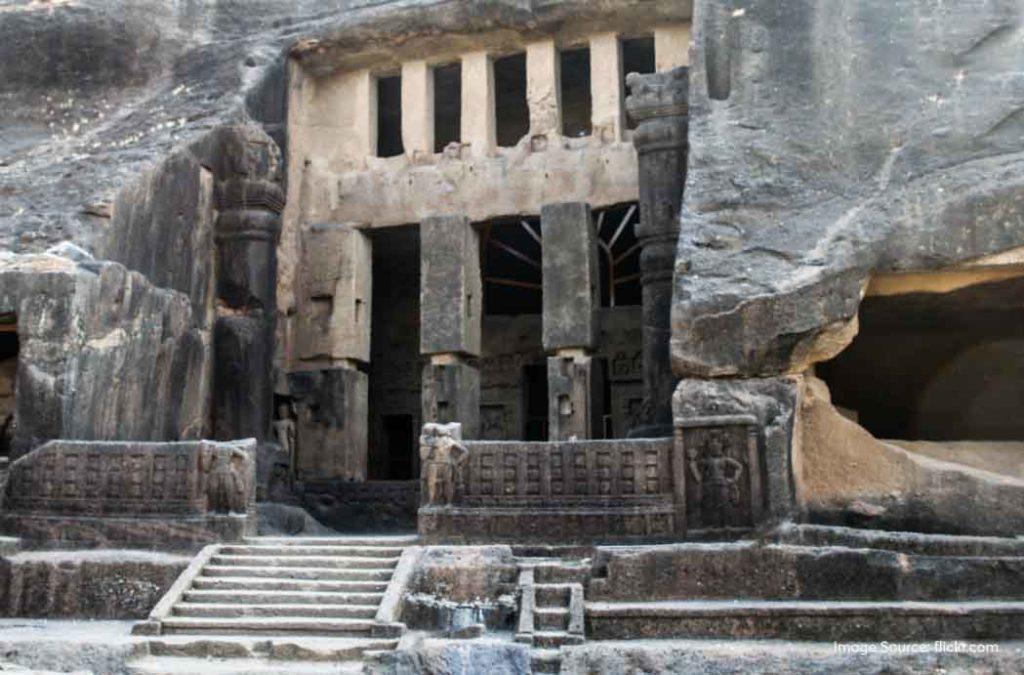
Surprisingly, these caves also have a cemetery. Not on the lower floors but on a terrace! Erected stupas and distinguished monks are found on the terrace making it look like a cemetery used back then.
All you need to know about the Edakkal caves
Location, timings and entry fee
Kanheri Caves are located inside the Sanjay Gandhi National Park in Borivali. The caves are easily accessible via roadways. The national park has a well-navigated route to reach Kanheri Caves.
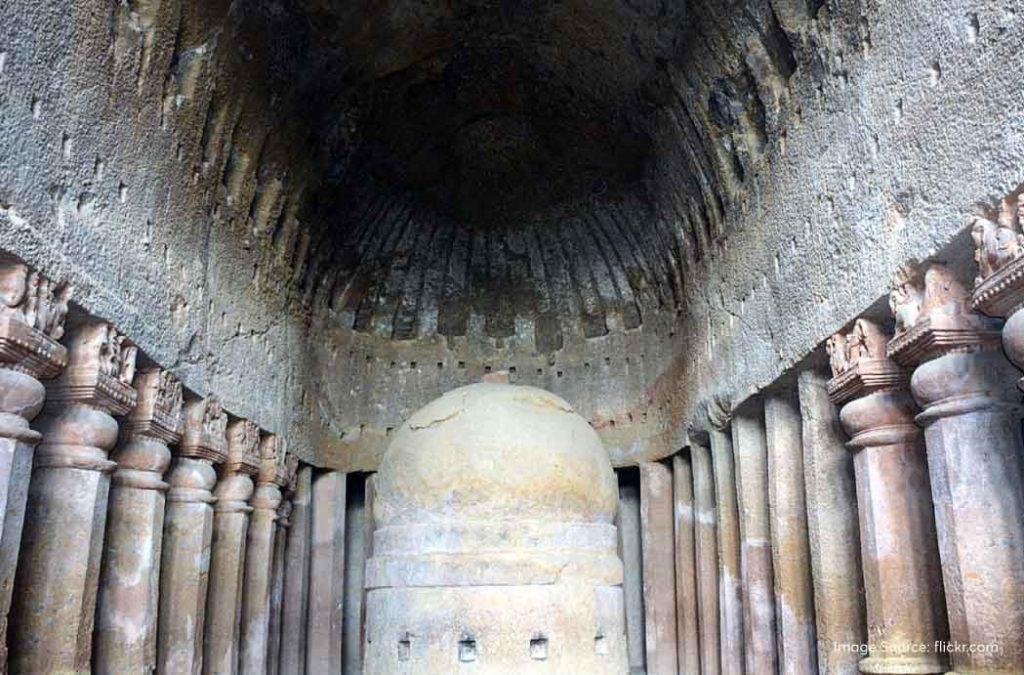
The time for exploring Kanheri Caves is between 8:30 AM to 5:30 PM. It is best to start your journey early in the morning. The national park is strict with the timings hence, you should avoid the evening time. It might take around 3 hours to fully explore the caves so prepare yourself accordingly.
The entry for Kanheri caves is INR 25 for Indian citizens. However, the charges for the bus from Sanjay Gandhi National Park may vary depending on the time of the visit. The charge for foreign citizens for the caves is INR 300 per person.
Architecture in Mumbai: 20 Places with Colonial Arches and Minarets
How to reach Kanheri Caves?
Kanheri caves are located inside the Sanjay Gandhi National Park making it a super accessible place. You can easily reach the national park through roadways or railways.
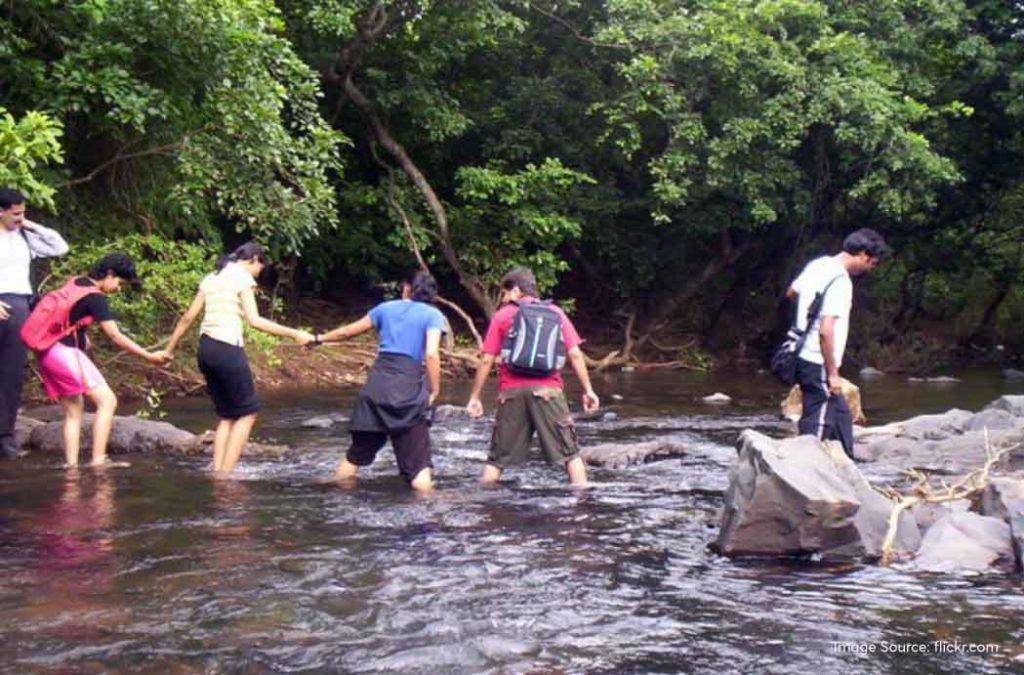
By Road
The roads are well connected to the national park. You can either opt for a cab or an auto-rickshaw. Moreover, you can take a government bus to reach Sanjay Gandhi National Park.
By Railway
Borivali Railway Station is the closest to Sanjay Gandhi National Park. It is located 3.1 kilometres from the railway station. You can either take an auto or a bus to the national park.
By Airway
Chhatrapati Shivaji Maharaj Terminus is the nearest airport to the national park. It is located 16.5 kilometres and you can take a cab or a private vehicle to reach SGNP.
A Sneak Peek into 4 Mumbai Weekend Getaways for a Dose of Adventure
Frequently Asked Questions
1. Is it safe to explore Kanheri caves on your own?
Kanheri caves are located inside a national park and you will often find crowds exploring it. However, it is advisable to travel with friends or family as the journey can be tiring. There are guards at various places to guide you.
2. Can we find a tour guide for Kanheri caves?
No, the caves do not have guides to take you through different parts of the area. You can either self-explore or choose a travel company for complete exploration.
3. Are eatables allowed inside the Kanheri caves?
Yes, you can carry snacks and water inside the cave. Since the caves are located on the top, several monkeys may steal your food. It is always a good idea to take a safe space for consuming food. Littering the area is strictly prohibited.
4. Where can I stay near Kanheri Caves in Mumbai?
You can find many affordable hotels near Borivali that suit your budget. Download the Treebo application to find budget-friendly hotels.
5. Are private vehicles allowed inside Kanheri caves for exploration?
Private vehicles are allowed up to the main entrance of the caves. You need to pay an extra fee depending on the vehicle. Post then, you need to opt for a short trek to reach the main caves.
